Cristiana Clerici’s International Spotlight #2:
An Interview with Illustrator Eva Montanari
 November 9th, 2010 by jules
November 9th, 2010 by jules
 I may not be able to fly to Italy and have coffee with the ebullient and very smart children’s-lit blogger Cristiana Clerici (pictured below), as I’d like to do, but every once in a blue moon I pull myself together and have something that might resemble a clever idea. And in September of this year, it was to invite Cristiana to 7-Imp, whenever the mood strikes her, to help me shine the spotlight on international picture book titles. Real coffee and meeting Cristiana in person would trump cyber-coffee any day, but I take what I can get. To get the low-down on what I’m calling Cristiana Clerici’s International Spotlights, visit this page of the site.
I may not be able to fly to Italy and have coffee with the ebullient and very smart children’s-lit blogger Cristiana Clerici (pictured below), as I’d like to do, but every once in a blue moon I pull myself together and have something that might resemble a clever idea. And in September of this year, it was to invite Cristiana to 7-Imp, whenever the mood strikes her, to help me shine the spotlight on international picture book titles. Real coffee and meeting Cristiana in person would trump cyber-coffee any day, but I take what I can get. To get the low-down on what I’m calling Cristiana Clerici’s International Spotlights, visit this page of the site.
Today, Cristiana makes blogging easy for me, as she sent me the content for the below interview with Italian author/illustrator Eva Montanari (pictured right), and I had the distinct pleasure of formatting the images and text. The rest is all Cristiana — and Eva, of course, who muses on the creative process; her teaching and turning the “modest and inspired doodles” of her students into narrative threads; exploring the new territories of her art; rediscovering childhood joys in her illustrations; the joys (yes, joys) of making mistakes in one’s art; and lots more. So, I turn the keyboard over to Cristiana (who not only conducts these interviews, but also then translates them for us readers), and I thank her and Ms. Montanari for their contributions to 7-Imp and picture book discussions.
 Cristiana: Last summer, I went to Macerata, where illustration classes are held for those who would like to become children’s books illustrators. I had been invited by Ars In Fabula, who organized those courses, to see how their Master works, since it had already brought about excellent results (for instance, just to mention the most recent ones, La Governante by Sara Gavioli, or the new version of I Promessi Sposi by Umberto Eco, published with Scuola Holden and illustrated by Marco Lorenzetti).
Cristiana: Last summer, I went to Macerata, where illustration classes are held for those who would like to become children’s books illustrators. I had been invited by Ars In Fabula, who organized those courses, to see how their Master works, since it had already brought about excellent results (for instance, just to mention the most recent ones, La Governante by Sara Gavioli, or the new version of I Promessi Sposi by Umberto Eco, published with Scuola Holden and illustrated by Marco Lorenzetti).
Amid the teachers, there she was, Eva Montanari: a tiny fairy in flesh and blood! Delicate, gracious, always smiling, Eva is the perfect personification of some of her characters. Born in Rimini, Eva has had an apparently simple, though intense, artistic career, and she’s one of the more appreciated and published Italian illustrators abroad. Besides Italy, she has published in France, Spain, Japan, Taiwan, and in the States. In America, in fact, several of her books have been published, among them: A Very Full Morning with Houghton Mifflin and Chasing Degas with Abrams Books. Eva never stops—she’s in perennial evolution, always searching for new paths upon which to adventure—and it’s thanks to her innate curiosity that she has approached sculpture with surprisingly poetic results.
Even if, she says, when she was a child she was more interested in housekeeping than in illustration …
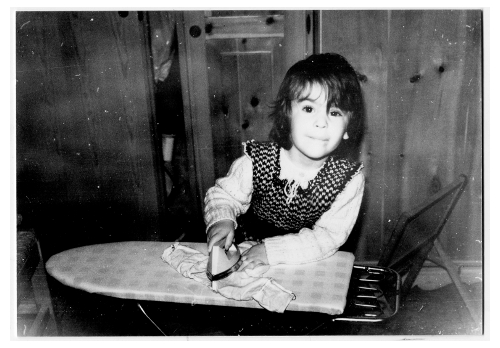
But I don’t want to take more of your time. Let’s get on with the interview.
Eva, first off, I would like to ask you a personal question: I would like to know if there is a place in your town, or somewhere else, you are particularly attached to.
Eva: A place in my town… Well, maybe because it’s summer and also because I’ve grown up in Rimini, which is only a few steps away from the beach, it’s only now I realize I could never live in a town where there is no sea. I mean, live forever. To be honest, I don’t quite like the idea to have just one established place, somewhere where I shall close the door and hide away from the rest of the world. I love traveling. When I go back to Rimini, though, I realize the sea is what I had missed most or what I dreamt of when I was really tired, both in winter and summer-time.
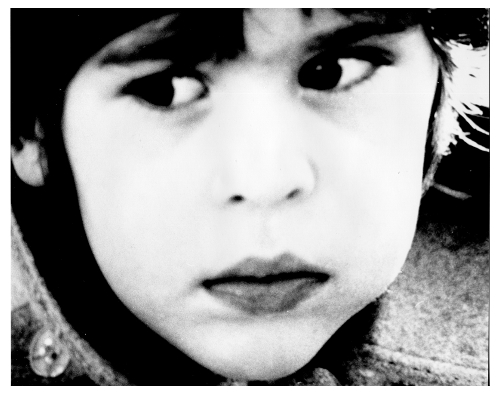
Cristiana: I can understand, even if I’m from a town far from the sea. Listen, when you were a kid, what was your relationship with books and reading?
Eva: I always liked reading. My mother used to read many books. She has always been a regular reader. Her family, though, wasn’t a cultivated one: Her parents were peasants. They were almost illiterates, and at home itself there was no real book heritage. In fact, she used to borrow books from the local library. When I was a child, we had only a few books and my mother used to read them aloud at bed time. She read them so many times that me and my sister knew them by heart! After this, I started to read anything I could find: At Primary School, I remember I avidly read all the novels by Agatha Christie. I was able to understand what literature was all about only much later, but it was fun to discover reading like this — through books that were not really suited for my age, such as some of Ken Follett’s bestsellers when I was only nine or so. I used to get passionate about those books, because they were dealing with adult themes, and this made me an avid reader in the end. I didn’t read many “classics” when I was a child. I discovered them only later.

Cristiana: Can we assume that, even if those readings were not age-appropriate, they somehow gave you a different vision of life?
Eva: I can’t say for sure they did. Maybe what was really attractive to me was something else. Detective stories, for instance, that are built following a serial structure…were more appealing to me when there was also a psychological description of characters. I liked this element as, in a way, it helped me in tracing a sort of sentimental education, which is something you yearn for when you start understanding that not everybody thinks the same things you do. Even if in the end, in these kinds of books, explanations are quite obvious: everything is written and the reader has but a very little margin to imagine.
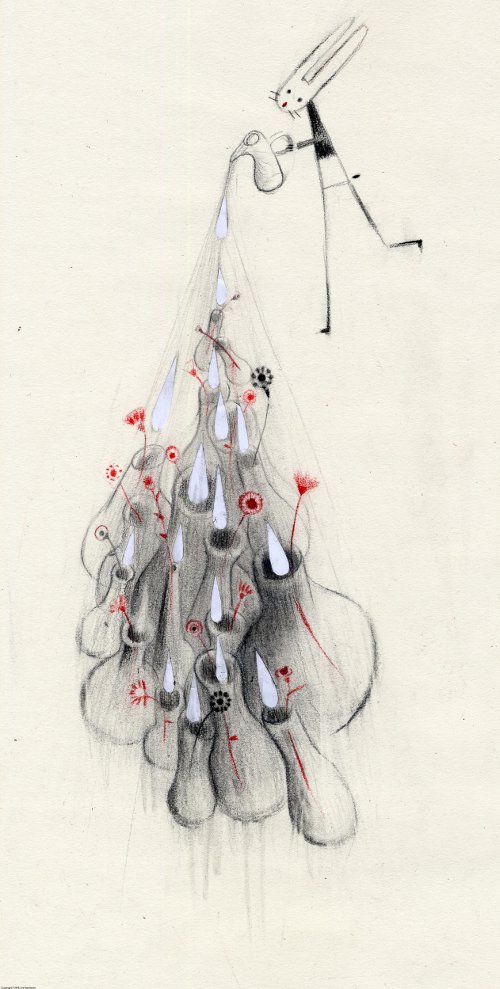
Cristiana: This makes me think of something you were saying about characters in paintings: You said that, at times, you imagine what could happen to some of them. This was the case with one of your last books, Chasing Degas, where you started from a detail in a painting by Degas and you ended up inventing a whole story. Can this curiosity about a character’s psychology become an authorial flash or inspiration at some point?
Eva: I’m very curious about people: I realize how difficult it may be to get to know yourself first and then to get to interpret other people’s minds. For sure reading was a big lesson for me: reading allows you to live lives that don’t recall yours in the least, lives that are not based on your same principles and aspirations. Even if you’re open to the world’s contamination, you’re that one person, not someone else. This is why I’m attracted by the idea that, through characters, I can “live somebody else’s life.” I’m fascinated when I can discover other people’s reactions when they face specific situations. It causes me to have a confrontation with my own reactions. This is extremely invigorating to me.
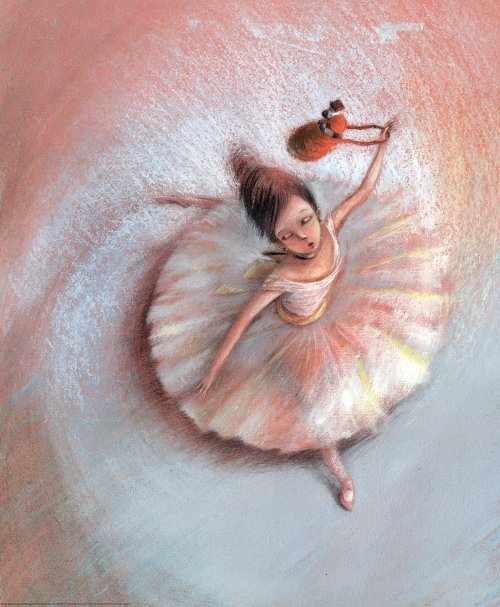
Cristiana: Eva, you’re both illustrator and author of most of your books. This is something I’m mostly interested in, because you’re a complete author. This means that the book you create is something that is totally personal. Consequently, your creative process is a unique experience as well. Can you tell us a bit more about your creative process?
Eva: Every time it’s different. But you were right: The creative process that originates the book, more than the finished product itself, is the nicest part for me. Even if it’s not always the same for all books, on this first intuition subsequent interventions are made. These are the result of a critical approach from those people contributing to the making of the book. On the contrary, the creative process originating the idea, when you still don’t know what will come out, when you have an illumination and you try to elaborate it… that is a magic moment. At times, ideas originate from facts that just happen, that keep holding a place in your mind, at times form images that suggest a course. Often, by simply looking at some of my artwork, people who know me very well recognize elements that are very deeply rooted in me. Images and stories that are invented with no clear intent amaze, first of all, {the one} who creates them. It constantly happens that apparently harmless metaphors end up revealing contents that are mysterious to us, too. It’s fascinating.
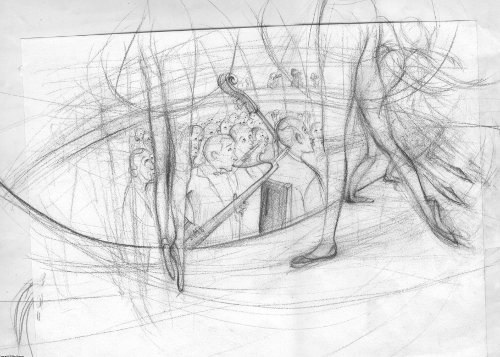
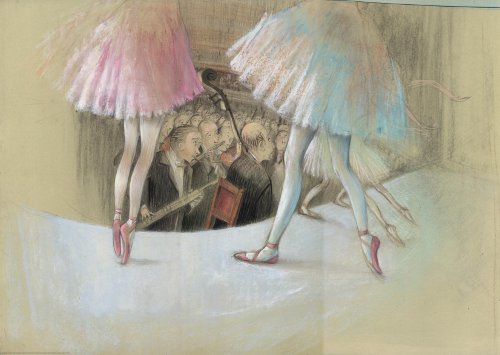
Cristiana: I’ve had the chance to meet you in person, and I have to say that there is a real correspondence between the grace you express in your illustrations and the one you have as a person. Your artwork is always very precise and, at the same time, it really has a sense of grace, of harmonic composition.
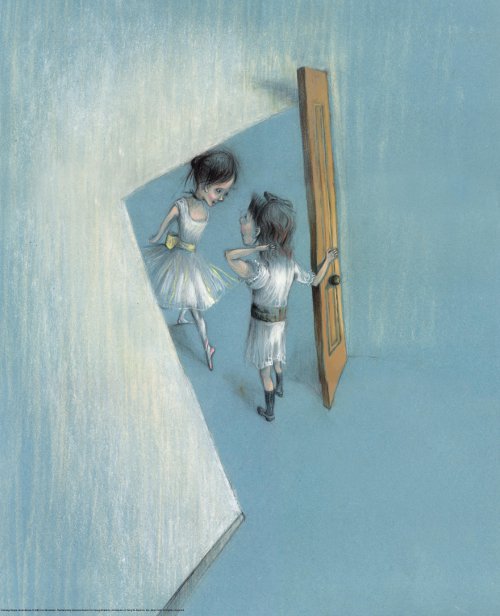
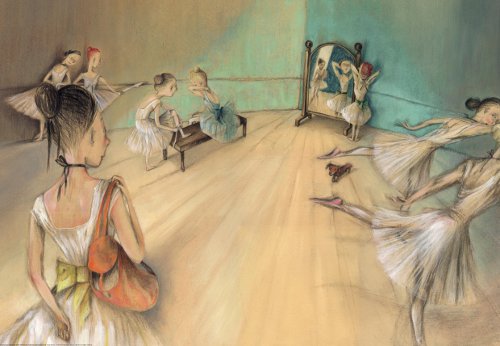
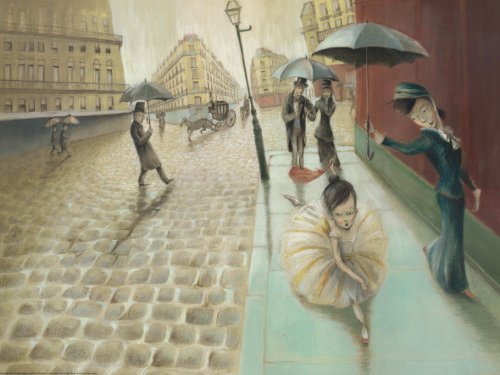
I know you teach illustration for Ars In Fabula. Your lessons are open to those people who are interested in starting to work in this field; many of them have ideas, but they don’t know exactly how to develop them. Being both author and illustrator, how can you help them in this regard?
Eva: In my courses, I always start with an exercise that is a game as well. In the past, for instance, we started with real anatomical studies that have then been re-elaborated; last year, I personally mimicked some situations, pretending I was sad or scared, hungry, or imitating dramatic scenes, tearing my hair out…
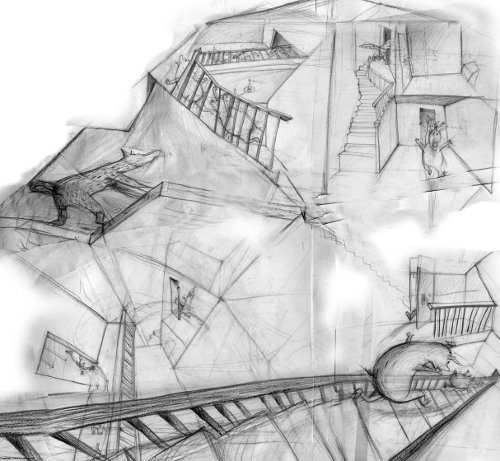
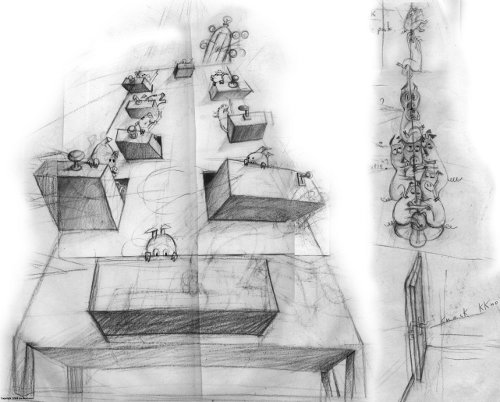
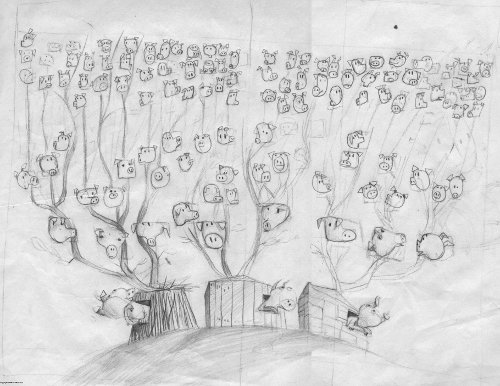
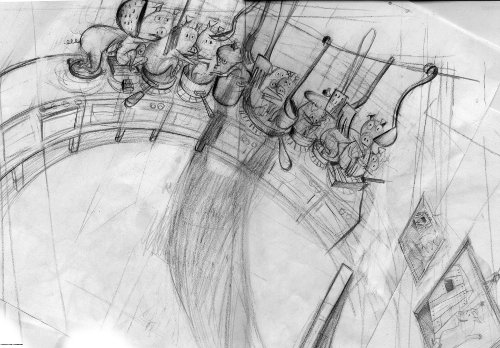
These studies from life have then been the starting point for a subsequent elaboration. The “game” we played this year was to randomly pick words from the dictionary and try to literally “centre” their definition with one image. This is the beginning. I try to have them draw as much as possible. We started with letter A, and in a day we arrived to letter G and you could already see a big difference: their hands start to be less blocked, they are more fluent, and some minds already started to bloom! Compared to the precise and scholastic application of a technique, that is the part I like the least about teaching, as it’s a step that comes in a second moment and corresponds to a very personal research. What I try to do with them is to let their singular personalities come to surface. I therefore have them sketch a lot and very quickly. They don’t have to pursue the perfect drawing but the idea, because to me this is what helps them express their own personality. After an unavoidable moment of crisis, it’s exactly from there, from a modest but inspired doodle, that the start of a narrative idea generates: something we can transform into a story-board in the days that are left. The first step of this year’s class was to create a personal dictionary on a little sketchbook. The following step was to recognize amidst those doodles (no nice drawings, nor chiaroscuro or colors yet!) a trace to develop. I hope this will be a little seed that will germinate, something they’ll keep watering to see it grow when they are at home, alone.

Cristiana: This is very interesting, because often when you start you think you have to immediately produce the perfect drawing, finished, technically precise, while you’re saying that it’s the research, an introspective research as well, that is the base for an artistic work.
Eva: Yes, and I believe that—at the beginning—it’s very frustrating. Those who are already good at drawing are the ones who end up having bigger difficulties. Paradoxically, those who still hold their pencils as if they were sticks and slowly see their hands getting more and more loose and images surfacing, as if it were magic, are much more satisfied. Those who are already good at drawing have trouble getting rid of that desire to demonstrate, mostly to themselves, that they can produce a good illustration. It’s very difficult for those who have been illustrators for a while to get rid of their own formalities and schemes, too.
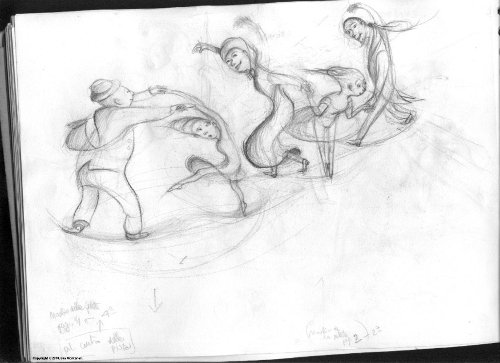
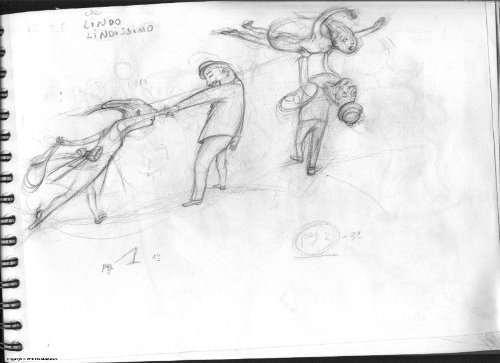
Cristiana: Okay, this is something I would like to explore more deeply: the research of oneself never really ends — from the technical point-of-view somehow but, in particular, in the way you approach images and ideas. I know you’re doing remarkable artwork with sculpture as well, that you’re now up to image research and developing process that starts from your beginnings. Can you tell us something about the evolution of your work?
Eva: Thank you. In fact what is more interesting to me is this kind of work. I wanted to study literature in college, but I wanted to also create something. I wasn’t in the position to waste time, and I had to make a quick choice: luckily enough, I knew what I liked most! I’ve always had the regret I hadn’t studied enough and that it overall lasted too short, that I somehow didn’t learn as much. Then, the years passing, I realized that the real benefit of doing this job was that I could keep learning and working on my own art, on myself.

A professional growth is possible in all kind of jobs, true, but what is mostly difficult is having the chance to really and suddenly give it a shake. Through this job, I discovered as well that I have the possibility to get to—in depth—everything that interests me, with no limits. In fact, in time, I have re-visited topics I had abandoned for some reason. I put them in the cauldron, mixing them with new ingredients, and then I waited to see what could come out of it.
Anyway, working on yourself can be destabilizing at times, because you don’t know how to do it; others, because maybe you wish to explore new territories you know almost nothing about, and you don’t know where this will bring you. This is why I believe it’s important to always keep an eye on the past, to what we have been up to till that moment when we decided to make a change and start brand new.
Also, it’s important to try to understand what is “good,” maybe because it brings joy with it or because it reconnects you with the magic of childhood: were it possible to grasp that childish joy and transform it into something new, it would be fantastic. More or less this is what I’m trying to do, or what I think I’m doing.
Cristiana: You’re telling me that, in fact, nothing is lost. Everything remains, more: it returns with an urge of evolution.
Eva: Yes, it’s the emotion you feel when you see something new coming to life. It’s what happened when I tried my first experiences, when amid many frustrations and screwed-up paper, I finally found my own way, almost by chance.
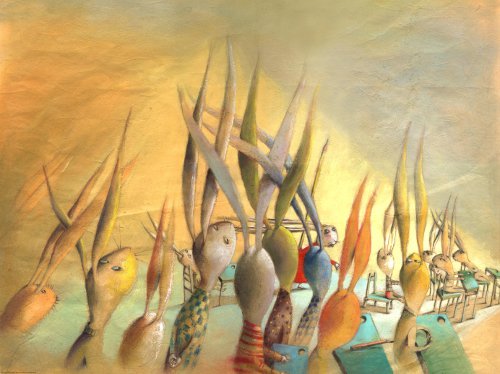
I remember experiencing so many techniques during my school days: for instance, at one point, I got incredibly passionate with watercolor, till I realized that it really wasn’t at all my medium. At the beginning, you always have to face a big difficulty, because the millions of images you have in your head are not naturally filtered by the arm and they don’t get to your hand. They don’t want to come out! Then, at one point, there’s a reverse process where it’s the hand suggesting ideas that get to your mind to be elaborated, enriched, and transformed to then go back to your hand. It’s a circular mechanism. When you reach this secret path, you feel happy. You feel as if endless ideas and stories and images may come out of this magic proceeding.
To be honest, if you just follow this method, it may happen that you reproduce the same characters you had already “met” years before; they may have just grown a mustache or they have lowered a hat on their heads, but no doubt it’s them again. The point is they have nothing new to tell. So, if you stop listening and looking for a while, you just have to start again. It’s an eternal quest.
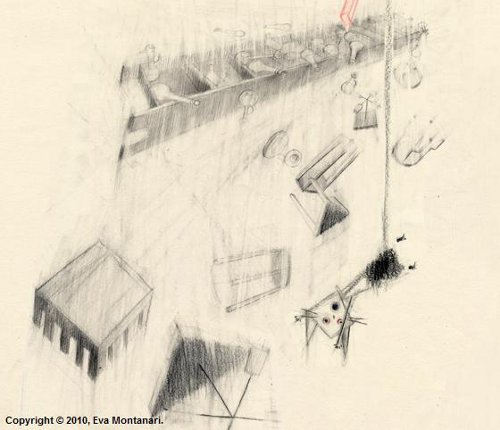
Cristiana: Very often, when facing difficulties, people get scared and tend to be blocked. You’re saying that maybe, in some cases, difficulties can be ‘life-saving,’ that they can be the beginning of something else, right?
Eva: To me, difficulties are ‘life-saving.’ I’m saying this somehow lightheartedly, because I apply this to art, drawing, invention, and writing. Should I have to apply it to real life, then I would be scared to death! It’s much easier to put yourself at stake on a piece of paper where, if things go wrong, you can throw it away and start brand-new the following morning; in life, very often you can’t do this. In an artistic course, there’s just you and your possibilities. In life, there’s other people and their lives. I have to confess, I’m often scared.
(Click to enlarge.)
Cristiana: Well, this is human; otherwise, you’d be a perfect machine. Going back to us, I had the chance to see your sculptures, which are really wonderful. Can you tell us something about this?
Eva: Let’s say that, for a while, I’ve been playing with those characters I usually make two-dimensional on a piece of paper: I’ve had fun seeing them become three-dimensional in space. While I was experiencing this, I always had in mind some narrative ideas, because for me images always carry with them a story to tell. I’m no painter or sculptor. Therefore, every work gives rise to something, no matter if it’s a real story or just an illuminating idea: I wished those characters could somehow tell something about themselves. From this principle, I made a book where all the characters are taking a walk with an umbrella in their hands: I imagined the inhabitants of a town seen from above and partly hidden by their umbrellas, just skimmed by raindrops accompanying them for a short while to then evaporate.
(Click to enlarge.)
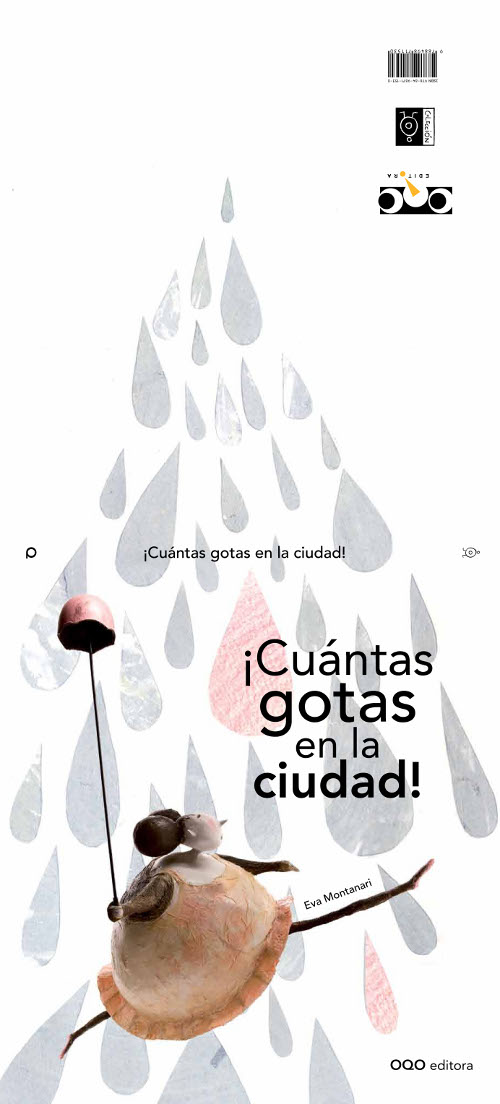
Cristiana: This book has been published in Spain and France (with OQO Editora), right?
Eva: Yes, but it will soon be published in Italy as well.
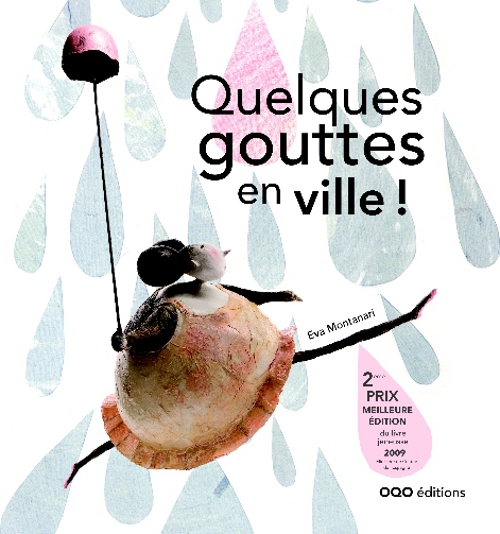
Cristiana: With which publisher?
Eva: With Logos. The title is: Quante gocce in città (or, How Many Drops in Town).
Cristiana: The very last question I have regards new projects, in particular a solo one: Can you tell us something about this?
Eva: Yes, I’ve got a project that has almost been completed, even if the technical part hasn’t been decided yet. It’s a project I have temporarily put aside and that I would like to revise. I would like to verify, after some contemplation, if everything really works. I’ve been working on it for quite a while, and it’s very different from anything I have ever done before. It really surprised me, too! Then I have other little stories that are more similar to my previous works, but they do impassion me.
Cristiana: I’m soooo curious now. I would like to see it all!
Eva: Maybe I can show this to you, so you can tell me what you think about it. I’ve got it here with me.
Cristiana: Yes, guys, you’re authorised to envy me! Eva, I really want to thank you for being so available and generous in this interview. I hope your words will be illuminating to those who are starting this career, because it’s not so easy to meet with authors that are already established like you are. It has been a real pleasure meeting and talking to you. Thank you.
Eva: Thanks to you.
(Click to enlarge.)

Cristiana: What is your favorite word?
Eva: “Insufficient.”
Cristiana: What is your least favorite word?
Eva: “Inescapable.”
Cristiana: What turns you on creatively, spiritually or emotionally?
Eva: “Beauty” I stumble on by chance. The compulsion to tell and invent that lights in me every time some unexpected apparition comes.
Cristiana: What turns you off?
Eva: Forgetting when it’s time to change. When habits take root and act on my behalf.
Cristiana: What is your favorite curse word?
Eva: “Porca paletta!” (Cristiana: Mmmmh, how can I translate this? Well, a literal translation is the only possible way, maybe. It means “bloody shovel!”) It’s no real curse word. It’s more like a “word you’d better not repeat,” as my mother explained when I was five or six, when she heard me repeating one of her usual expressions: I somehow reconnected this to the green shovel we used to pick up trash. Heaven knows the reason for “bloody”!?
(Click to enlarge.)
Cristiana: What sound or noise do you love?
Eva: When, at dawn, birds’ arguing slips into your dreams: Who’s right? Who feigns? Who denies?
Cristiana: What sound or noise do you hate?
Eva: “Bruummmmmm.”
Cristiana: What profession other than your own would you like to attempt?
Eva: I don’t know if mine is a real “profession.” At times, I have more the feeling I’m simply going along with my inclinations and, often, my wishes… All the things I would like to experience have not much in common with what you can rightly call a real “profession.” I tend to make this distinction, because my parents had a cake shop, where I have worked for a while. And when I wake up, scared and wondering if I’m still and always doing what I want, I go back to those memories and get assured it is. Only now, I am really able to give those raids into concreteness the right importance.
Cristiana: What profession would you not like to do?
(Click to enlarge.)
Eva: I believe I’d be unhappy with any job that doesn’t allow any creative part (creative meaning more “invention”). But maybe, if I could recover those mysterious moments I can only vaguely recall, what is usually called “free time,” I would use it to do what, now, I consider “work.” It would be precious. And maybe I’d be happy all the same.
Cristiana: If Heaven exists, what would you like to hear God say when you arrive at the Pearly Gates?
Eva: “You can take a look and go back.” (If it’s true He knows everything, He should also know that I left something unaccomplished.)
Two little notes to the interview:
- Chasing Degas has now been published in Italy as well — for Kite Edizioni under the title Inseguendo Degas.
- Some other wonderful sculptures, together with paintings—which were the subject of an important exhibition in Fall 2009—have inspired the publication of a lovely volume, titled Tempo d’Instabilità, published by Tricromia. The thread of these works is weather in its wider meaning, a metaphysical, inner, unusual weather, marking it’s time for a change!
My special thanks to the publishers for allowing the publication of the images in this post: Abrams Books; Houghton Mifflin; OQO Editora; Tricromia; and Ars In Fabula for the collaboration and the assistance.
Copyright© text and images as reported above. Images have been reproduced with the permission of publishers. Their reproduction is forbidden.
{Jules’s Note: The spiffy and slightly sinister gentleman introducing the Pivot Questionnaire is Alfred. He was created by Matt Phelan, and he made his 7-Imp premiere in mid-September. Matt told Alfred to just pack his bags and live at 7-Imp forever and always introduce Pivot. All that’s to say that Alfred is © 2009, Matt Phelan.}
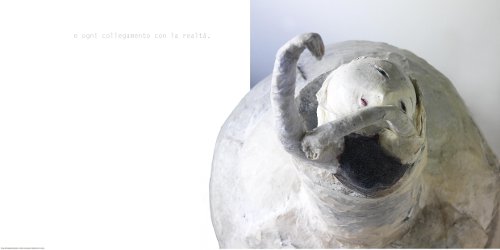
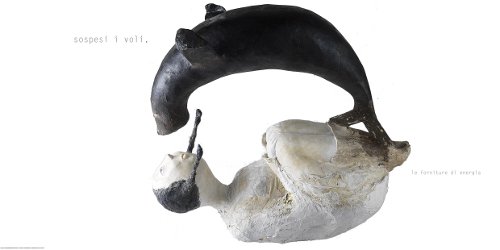
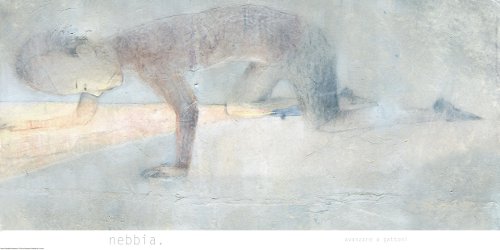
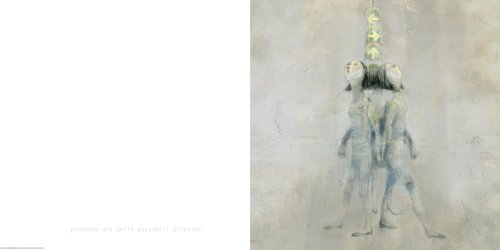
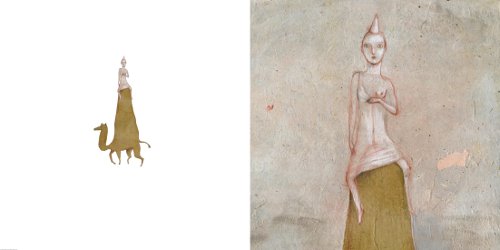
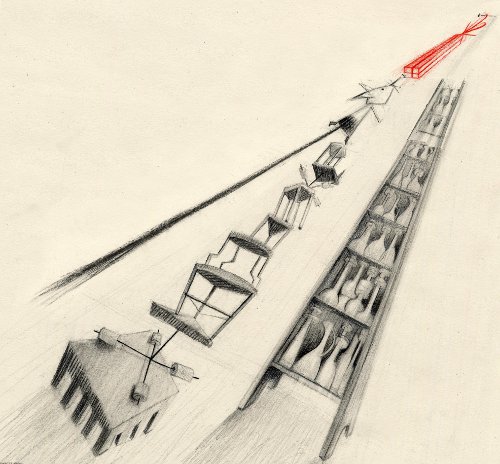

Wow, so awesome. As always, I love seeing the in-progress stuff. So many of these illustrations seem to jump off the page; alive and flowing. Thanks for sharing.
It is always a pleasure to get to know another mind. Thank you.
Eva is one of my very favorites!!! It’s so wonderful to see her artwork- especially the sketches. Everything she does is so full of stretch, and movement, and emotion, and care. Thank you for this post!!!!
Great interview Christiana. Fascinating and ennobling; many profound ideas to consider. Nice to meet Eva M.
[…] Seven Impossible Things Before Breakfast a blog about books « Cristiana Clerici’s International Spotlight #2:An Interview with Illustrator Eva Montanari […]
[…] Cristiana Clerici’s International Spotlight #2:An Interview with Illustrator Eva Montanari November 9th, 2010    by jules […]
Hi everybody! Thank you very much for your comments, it was my pleasure, I’m glad you enjoyed the interview, many more to come… in a way I would say they’re all different because the artists involved are soooo distinct. I’ll soon be in Paris, for the Salon de Montreuil, where I have agreed other interviews so, if you please, stay tuned! Thank you again!!!
Cristiana
Cristiana, may I please try to squeeze into your suitcase? I’ll be no trouble at all. I swear. And I’ll bring tiny snacks.
Jules dear, you know I’d take you with me with GREAT pleasure!!!!! I’ve got family and friends, lots of places to stay… know what? We would really need to open our International Book Board… any rich businessman out there????? 😉
Great interview. Thanks for sharing the thoughts on the creative process and the beautiful images.